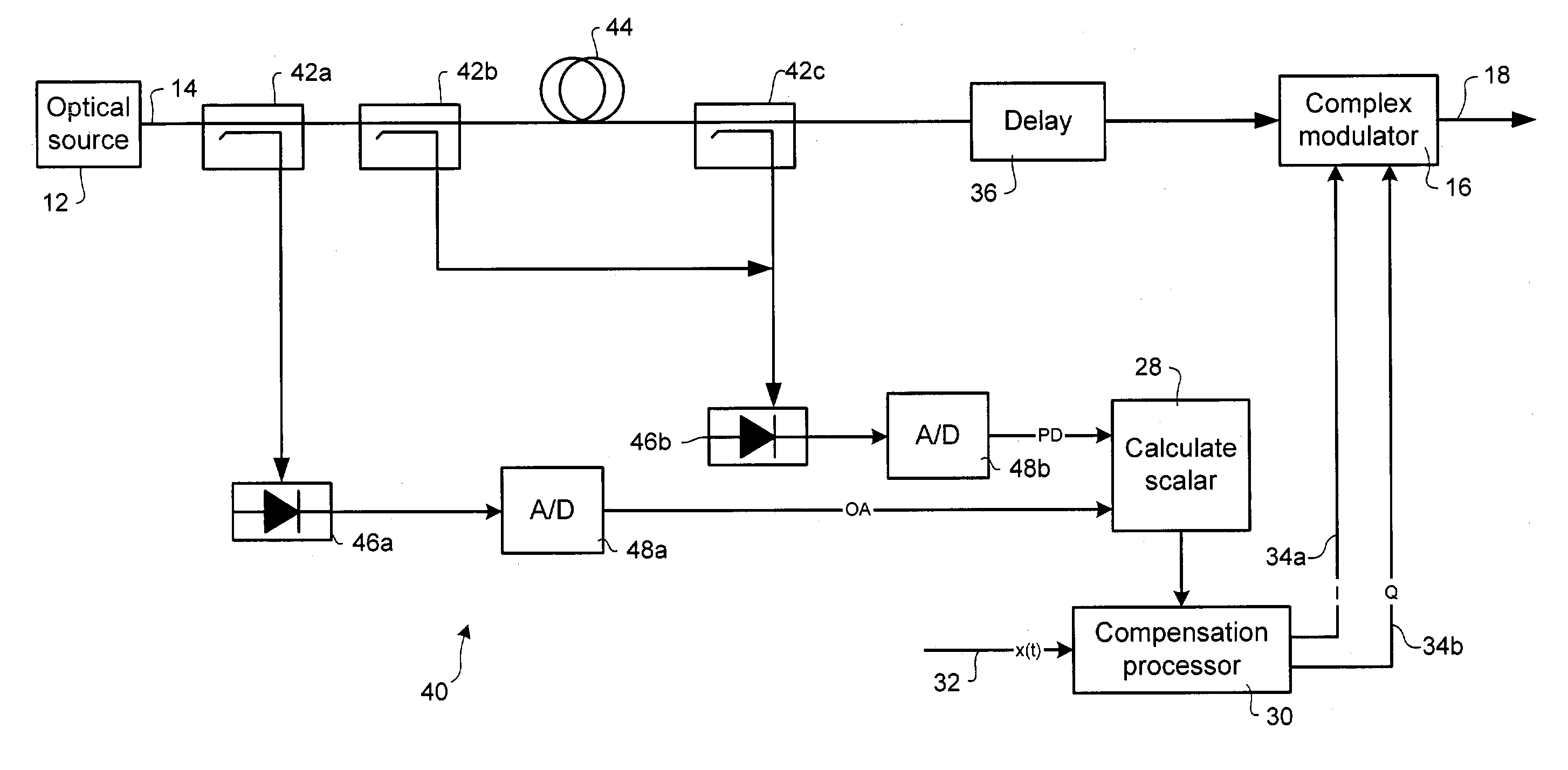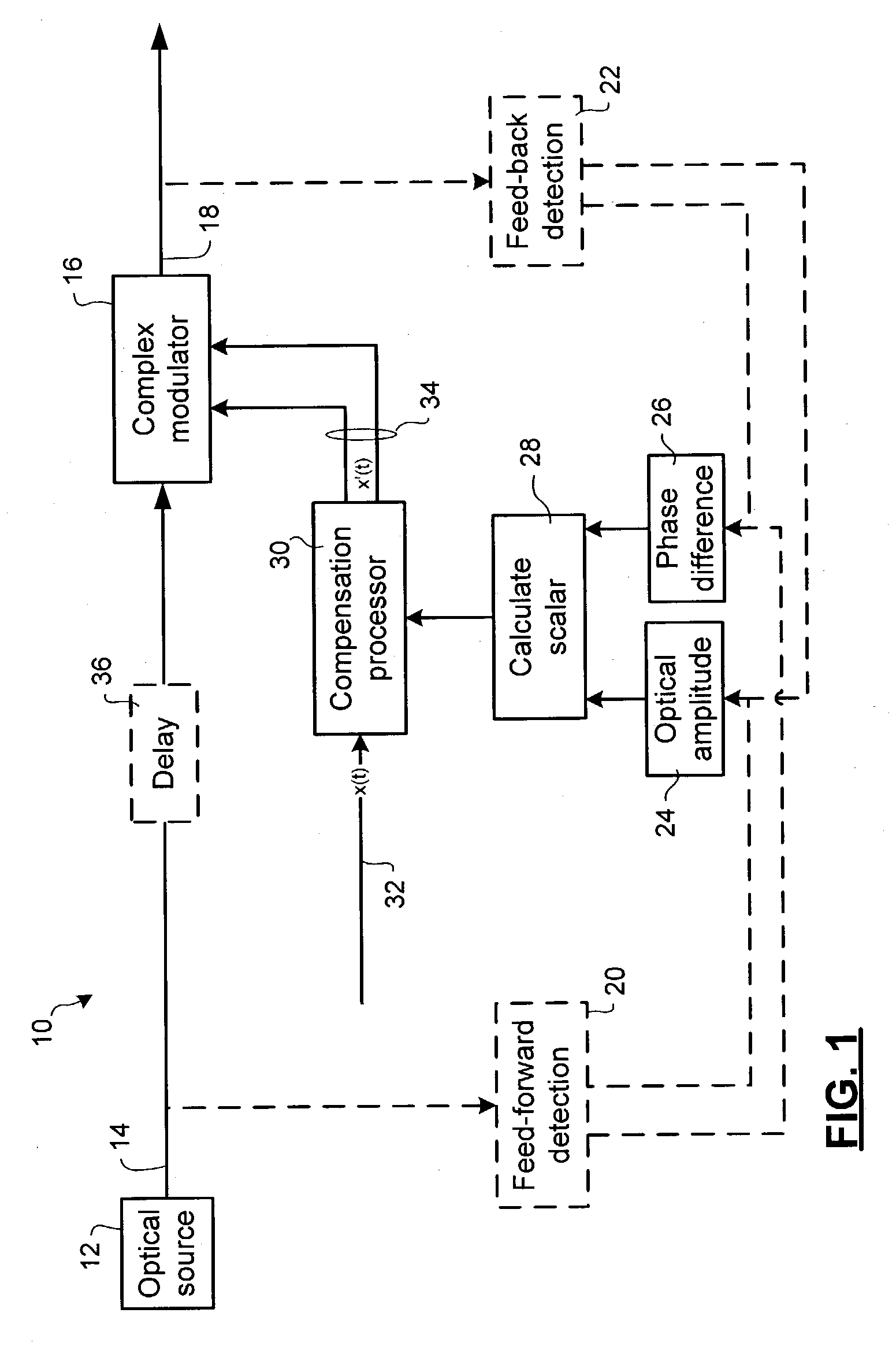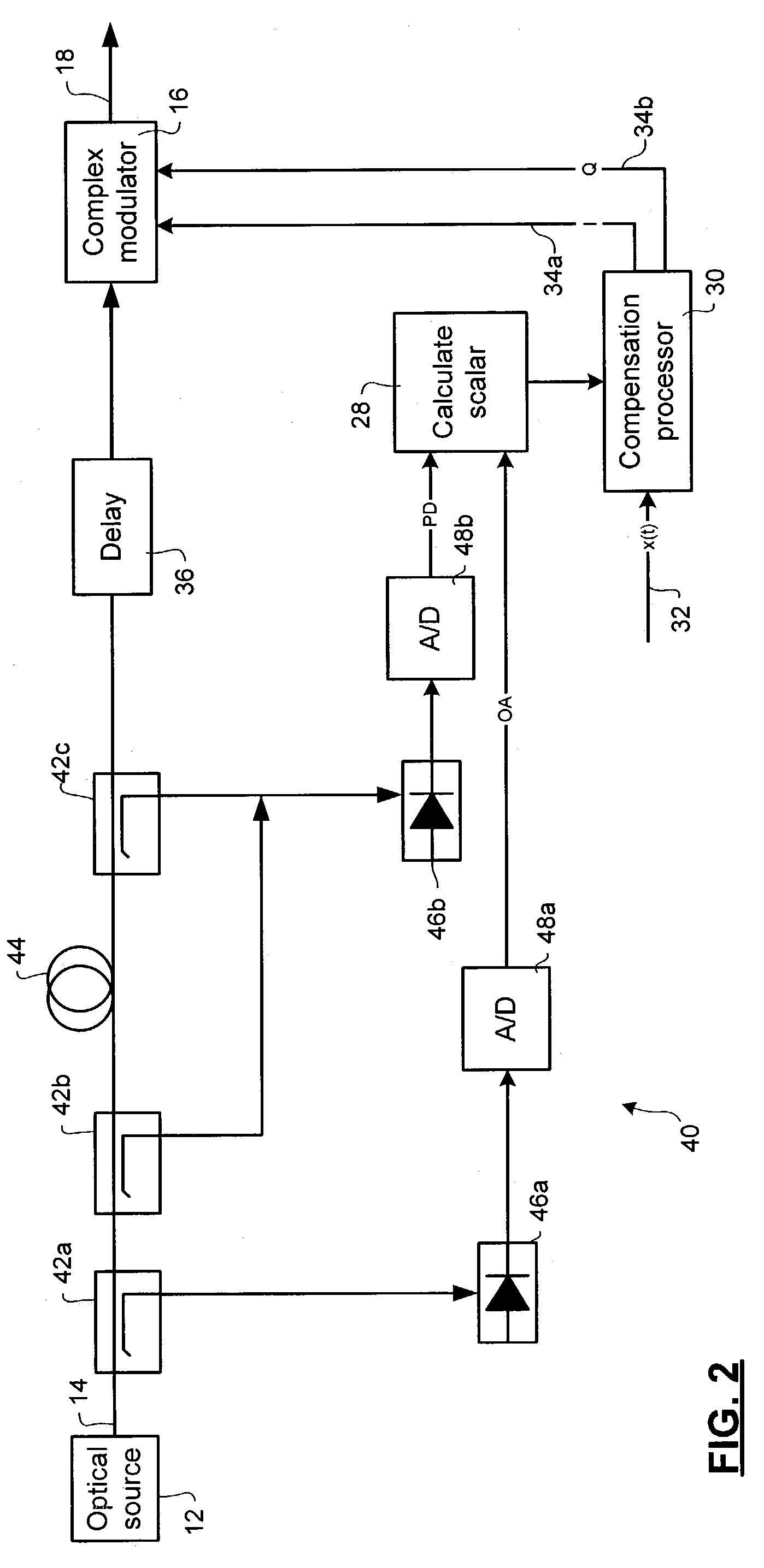Method and apparatus for laser line-width compensation
a laser line width and compensation technology, applied in the field of optical communication systems, can solve the problems of significant net optical chromatic dispersion, significant deformation of tuning response, and significant deformation of performance in the region of 1 mhz
- Summary
- Abstract
- Description
- Claims
- Application Information
AI Technical Summary
Benefits of technology
Problems solved by technology
Method used
Image
Examples
Embodiment Construction
[0042]The invention provides a means for laser line width compensation, to provide a more stable optical signal to serve as a carrier for data in an optical communications system. Noise is detected in an optical output signal emitted by a laser of the optical communications system. The detected noise may be amplitude noise and / or phase noise. The detected noise is used to calculate a compensation scalar. The compensation scalar is used by a compensation processor to modify an input signal containing data to be transmitted by the optical communications system. The optical output signal is delayed in the optical domain while the compensation scalar is calculated and the input signal is modified in the electrical domain. The modified input signal is used to control a complex modulator that modulates the delayed optical output signal to cancel the detected noise while applying the data to be transmitted by the optical communications system.
[0043]FIG. 1 schematically illustrates principa...
PUM
 Login to View More
Login to View More Abstract
Description
Claims
Application Information
 Login to View More
Login to View More - R&D
- Intellectual Property
- Life Sciences
- Materials
- Tech Scout
- Unparalleled Data Quality
- Higher Quality Content
- 60% Fewer Hallucinations
Browse by: Latest US Patents, China's latest patents, Technical Efficacy Thesaurus, Application Domain, Technology Topic, Popular Technical Reports.
© 2025 PatSnap. All rights reserved.Legal|Privacy policy|Modern Slavery Act Transparency Statement|Sitemap|About US| Contact US: help@patsnap.com



